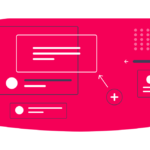In this guide, we’ll see different types of ad fraud and how they affects publishers. And also talk about the most common Types of Ad Fraud tactics, and finally, share steps publishers can take to prevent fraud.
A study conducted by 16 programmatic publishers (including The New York Times and The Washington Post) found that publishers lose as much as $1.27 billion every year due to ad fraud. And this number is growing. Some preventive measures like ads.txt and ads.cert are now available, but ad fraud is still thriving.
It’s a common belief that ad fraud affects advertisers or ad buyers. Of course, they are affected a lot. But the publishers also lose their source of income and credibility.
In order to help publishers fight against ad fraud, we have created a list of the most common types of ad fraud and how they affect publishers.
Bots / Non-Human Traffic Ad Fraud
Bots are computer programs that mimic human interactions. These programs make it seem like an ad is getting an impression, but in reality, it’s simply being scanned by a bot. Generally, it’s easy to detect bots as they can’t mimic human behaviour accurately. But, fraudsters are trying to make them more sophisticated to more closely resemble human actions.
How does Non-Human Traffic Increase the Chances of Ad Fraud?
A study suggests that at least 10% of traffic on every website is fake. Most publishers know that buying fake traffic is a bad idea. However, there are publishers who purchase fake traffic, and that’s what enables such malicious practices.
Participating in private exchanges is one way to combat this ad fraud, as you limit your inventory’s exposure in the open market for everyone to access. Also, many publishers are actively fighting bot fraud by avoiding non-human traffic.
Also Read: Mitigating Programmatic Ad Fraud with Tommy Singh from AdPushup’s Publisher Development Team
Click Farms Ad Fraud
Clicks farms are comprised of low-paid workers whose job is to click on ads for click fraudsters (or click farmers). Clicks on the ad increase the CTR money, but the money goes to the fraudsters. It is a simple fraud technique involving direct human interaction, which makes it even more difficult to fight. If you look closely at your analytics results, you will notice such fraud.
Generally, click farms impressions come from developing and underdeveloped countries where people are recruited to simply click on multiple ads in exchange for money. It’s one of the most difficult ad fraud types to fight. Clicks are from real humans and so designing a mechanism to fight against them can be tricky. However, the first step to avoiding click farm scams is to identify them. Then we can work on measures to eliminate click fraud.
What is the Impact of Click Ad Fraud on Publishers?
Since followers rely on publishers to provide genuine content, click fraud can ruin that trust entirely. For instance, let’s say you see a post with many likes and shares. This may lead you to think that the post is actually informative and contain the details that you are looking for.
But once you click on the link, you find the post is not helpful. True, clicks are coming from a human. But that human is not interested in the clicked ads. Fake ids are created to execute click fraud, using which likes, and comments are dropped. As everything is happening on the publisher’s platform, the meaning publisher holds the blame.
Ad Injection Fraud
Placing ads on a publisher’s website without their permission or knowledge falls under ad injection fraud. These ads are usually injected by malicious browser extensions to either overlay or replace the existing ads. Once an ad injection malware has been installed, malicious ads will be able to replace genuine ads and even the publisher’s original content.
Ad injections are real, but some simple preventive measures are enough to fight against them. Generally, these malware attacks happen when a user installs software from unreliable websites.
What is the Impact of Ad Injection Ad Fraud?
Publishers make money by running ads. If their website does not show the ads of the advertiser who paid for the ad inventory, then publishers have a big problem at their hands. Ad injectors place fake ads on publishers’ content, this means that website quality also gets affected. Due to these reasons, publishers can lose both their visitors and advertisers.
Also Read: How to Detect Ad Fraud with Google Analytics (for Free)
Domain Spoofing
Domain spoofing is a malicious practice where fraudsters pretend to represent a premium publisher. Consider the infamous Methbot case, in which a spoofed premium domain helped fraudsters make over $5 million every day. Ad injection is also made possible by modifying the ad tags. However, now standards like ads.txt and domain spoofing can be avoided, as publishers and sellers are required to mark themselves as the authorized sellers of the inventory.
How Domain Spoofing Ad Fraud affects Publishers?
Publishers are robbed of their hard work with domain spoofing. It takes a lot of effort and time to get a good global rank for your website.
Ad tag modification means that fraudsters can sell a publisher’s inventory at any price for which the publisher will not get a single penny. It harms the safety of consumers on the webpage, which ultimately reflects on the publisher’s credibility.
Cookie Stuffing
Cookies are a piece of code that is sent to the visitor’s browser by the publisher’s website. Cookies collect information such as visitors’ IP, preferences, login details, and more. However, when multiple cookies of third-party websites are dropped on visitors’ browsers without informing them, it’s called cookie stuffing.
Generally, cookie stuffing is practised by online coupon-selling publishers, who redirect users to multiple websites. A website stuffed with cookies will open up multiple web pages and pop-ups and may try to install an unknown software.
What is the Impact of Cookie Stuffing Ad Fraud?
Cookie stuffing often turns out to be an affiliate scam. The problem is that anyone can check a website’s HTML code, from here, any piece of code or affiliate link can be copied. Fraudsters take this affiliate link, modify it and stuff it with cookies.
When the cookies run on the user’s browser, the affiliate link is called (or looks like getting a click). As the publisher’s affiliate link is used, advertisers think they are paying the original publisher. However, in fact, fraudsters are stealing the money here.
Conclusion
While it’s difficult to completely eradicate ad fraud, there are means using which publishers can avoid ad fraud. Also, it is up to the ad tech industry to create a safe environment for all parties, including publishers, advertisers, and consumers.
Along with implementing the methods that are considered the first line of defence against ad fraud, publishers should work with ad companies that specialize in ad fraud prevention to stay ahead of the curve.

Shubham is a digital marketer with rich experience working in the advertisement technology industry. He has vast experience in the programmatic industry, driving business strategy and scaling functions including but not limited to growth and marketing, Operations, process optimization, and Sales.




![Top 12 Ad Networks in India Every Publisher Should Know [2024 Edition] Indian Ad Networks](https://www.adpushup.com/blog/wp-content/uploads/2019/09/undraw_Note_list_re_r4u9-270x180.png)



